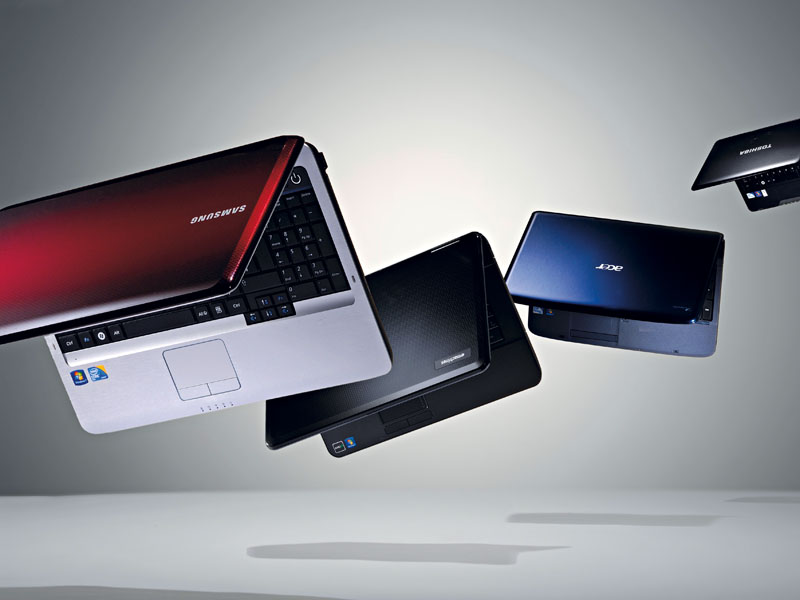
Wondering how to repair a broken laptop? We're going to crack open three common laptops; a netbook, an older gaming laptop and a modern Intel model.
In the process we're going to take a look at just how we got inside, how easy it is to remove cases and components and once inside just what you can do in there.
From replacing dodgy audio and data connections, to upgrading or replacing damaged parts. By the time you've read this guide no longer should you be afraid to open up your laptop.
Like any epic quest you'll need the help of some trusty companions. The most important is a good precision screwdriver set. We picked up a cheap 11-piece set from a large yellow DIY store for £8. To shift firm screws a set of pliers is useful for giving a little more purchase to your screwdriver.
For soldering duties a soldering kit including a stand and helper will also be required, these cost around £15 from eBay. A well-lit, clear work space is also advantageous.
Somewhere you can store all the parts you remove and containers for the many, many tiny, easily lost screws laptops seem to produce. With all of that to hand let's start our teardown.
How to repair your netbook
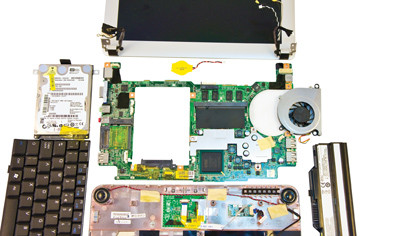
Starting small seems like a good idea to us and our first Dexter-style victim is a trusty netbook. This is an ideal place to start as the construction and internal components are at a minimum, reducing the internal clutter and confusion, plus it provides a perfect way of getting to know the basic insides of a laptop before we move on to more complex models.
Get daily insight, inspiration and deals in your inbox
Sign up for breaking news, reviews, opinion, top tech deals, and more.
The first thing to do is disconnect this thing from the mains and remove the battery. This makes sure the damn netbook isn't going to try and spring back into life as we're poking around inside it. The other reason is that many models hide securing screws within the battery bay, so we need to poke around in there anyway.
Before attempting any teardown it's worth stepping back and assessing how the land lies. For us this means checking to see what screws are clearly visible in the base, flexing obvious areas to see if they look like they will un-clip and trying to spot screws hidden behind rubber feet or stickers.
The first job is to remove all the visible screws.
Gentle stripping
We suggest having some sort of system for storing the screws. We tend to try and place them on the bench in a mirror of where they were unscrewed from. You could take a piece of A4 and draw an outline of the laptop and place the screws in the corresponding position on the paper.
We do that as there's such a varied mix of sizes it saves trying to remember and guess where they should go. Alternatively you could sling them all into various tupperware pots, we just hope you have the kind of mind that can remember where they all go!
If there are any access panels these will also need to be removed , but this is more of an issue with laptop models. Often on netbooks this simply isn't the case, they're not designed to be upgraded in this way, which is another good reason for performing a teardown. So you know just how to replace the hidden internals.
With all the visible screws out of the way it's time to start teasing off the bottom of the netbook's chassis. There are dedicated pry tools for this usually made from plastic, though small flat-head precision screwdrivers work as well. Be as gentle as possible at this stage, the main thing is to check for any hidden screws that can often be hiding in the case.
Once the main back has been removed as, you'll see for the other models, netbooks effectively come in two main pieces: the base and the display. Usually you won't want to detach the two unless you're performing a screen replacement but they will always come apart in two stages: the first being the electrical connections and the second being the physical hinge.
Delving further than this into a netbook is a case of continuing to remove visible screen and cable connections, the next main piece being the motherboard and with that out of the way you're done.
Dismantling an old friend
Armed with just a screwdriver and our cunning
01. Start with the screws
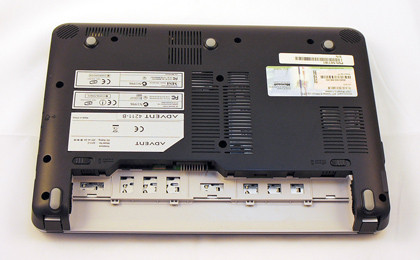
We'll start with removing all the screws. Switching to your finger tools see how amenable the bottom of the case is to being removed, in this case the bottom pretty much fell off.
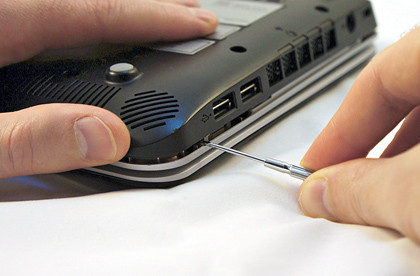
Normally you'll need a small flat-head driver to carefully un-clip the loosest area of the case and take it from there. Keep an eye out for screws hidden behind stickers or rubber feet.
02. Look at what you've done
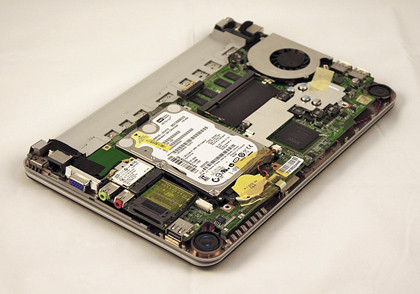
Often this is as far as you'll need to venture as you have access to all the main components including the hard drive, memory expansion, wireless mini-PCI-e module, cooling module and backup battery. For keyboard and touchpad repairs, screen replacements and motherboard repairs you have to venture further. First, taking a photo for reference.
03. Getting sticky
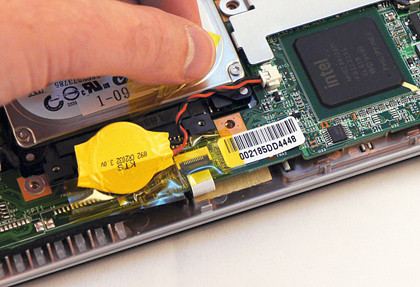
There will be a lot of tape holding various wires and components tidily in place. You'll need to remove all of these, which is why a reference photo will be handy when putting everything back.
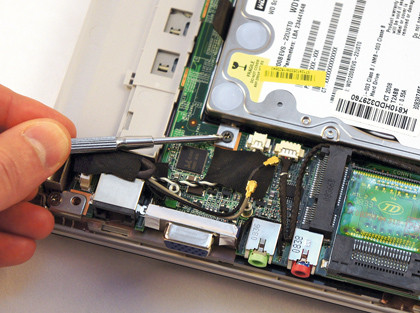
Some removable components, such as the hard drive or wireless module will be screwed into place. It's likely these will need to be removed if you want to remove the mobo.
04. The screening process
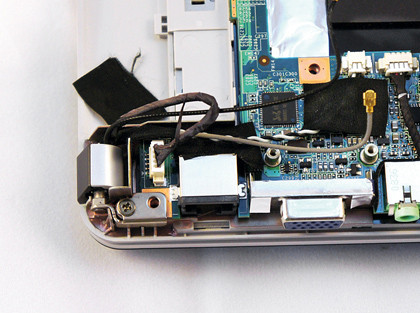
The last major component to go is the screen. On most models this is firmly held in place by a screw beside each hinge.
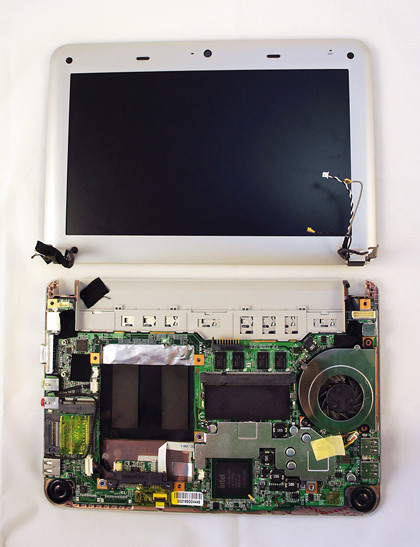
On top of this you'll find a number of cables going into the screen that carry the power, the video data, any wireless antenna that are embedded in it, plus data cables for webcams or mics. Undo and unplug these and the screen should come away.
05. Get your mother out
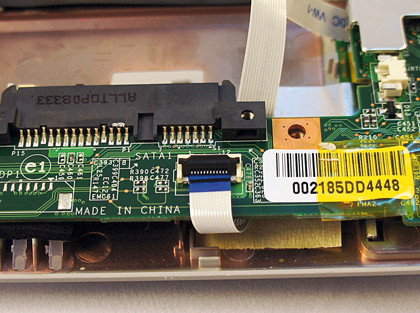
The keyboard, touchpad, speakers, chassis, LEDs and other sensors, such as Bluetooth adaptors will trail cables to the top and bottom sides of the mobo.
The ribbon connectors usually flip up; older types have a pull up section. You'll often find the keyboard ribbon awkwardly connects to the underside, you may have to yank the mobo away from this.
06. Keyboard popping
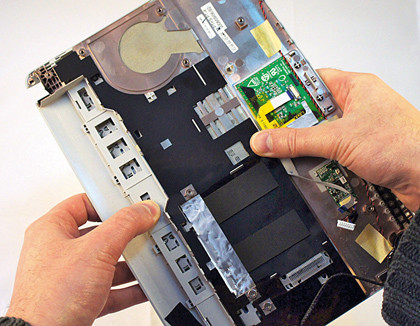
Keyboards are usually stronger than they look as they are designed to be highly flexible. The main issue is trying to work out if they're designed to be removed from the outside or from inside. Often if you look along the top row of keys you can spy tabbed areas to insert a flat-head screwdriver and pop them out. With this model it had to be popped from the rear.